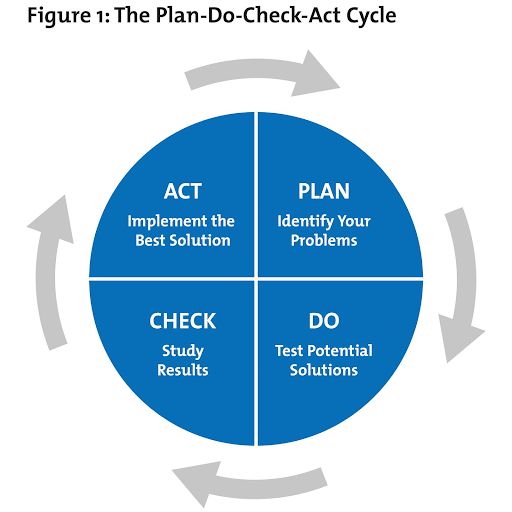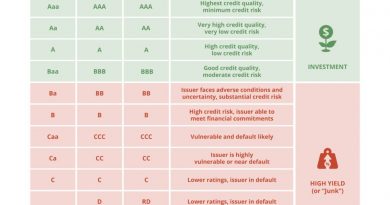What Does PDCA Stand For in Business Plan-Do-Check-Act Cycle

What Does PDCA Stand For in Business? Plan-Do-Check-Act Cycle
The PDCA Cycle is a four-step problem-solving technique used to improve business processes. Developed by American physicist Walter A. Shewhart in the 1920s, it draws inspiration from the continuous evaluation of management practices and their willingness to adopt or disregard unsupported ideas.
The method gained popularity in the 1950s through quality control pioneer Dr. W. Edwards Deming, who named it the "Shewhart" Cycle after his mentor. Deming recognized its potential to improve production processes in the United States during World War II.
Key Takeaways:
– The PDCA Cycle is a four-step technique to solve business problems.
– Many managers unknowingly use the PDCA Cycle, as it encompasses the same framework as strategic management.
– The last step of the PDCA Cycle calls for corrective actions to stimulate continuous business improvement.
– The PDCA process aligns with the Japanese business philosophy of Kaizen.
– Large corporations like Toyota and Nike have experienced significant growth after implementing PDCA or Six Sigma methodologies.
How the PDCA Cycle Works:
The PDCA Cycle helps differentiate a company from its competitors in today’s corporate world, where businesses constantly seek to streamline processes, reduce costs, increase profits, and improve customer satisfaction.
Managers often apply the PDCA Cycle unknowingly, as it embodies the principles of strategic planning. The cycle consists of four components:
Plan: A well-defined project plan aligns with the organization’s mission, values, and goals.
Do: This step sets the plan in motion, involving training, executing the work, and recording data for evaluation.
Check: Regular checks during implementation and an in-depth review upon completion ensure the project’s objectives are met and provide insights for future adjustments.
Act: After identifying and resolving past mistakes, corrective action is taken. The PDCA Cycle is repeated, potentially yielding better results.
The cyclical nature of the PDCA Cycle allows businesses to continuously iterate and improve their operations.
The PDCA Cycle and Kaizen:
The PDCA process aligns with the Japanese business philosophy of Kaizen, meaning "change for the better" or "continuous improvement." Kaizen involves all employees in improving productivity by finding efficiencies in the work environment. Like the PDCA Cycle, Kaizen promotes continuous improvement through small, incremental changes.
Examples of changes that can be made through Kaizen or PDCA include implementing new systems, eliminating waste, or adopting just-in-time delivery. Not all changes need to be small or incremental.
PDCA and Kaizen foster a culture of problem-solving and critical thinking within an organization. The PDCA cycle tests employees’ ideas, adjusts them, and implements them if they show potential. The cycle is an iterative process that continually tests concepts and promotes improvements.
Benefits of the PDCA Cycle:
Companies seeking to enhance their internal and external processes often implement the PDCA methodology to minimize errors and maximize outcomes. Once established, the PDCA Cycle can become a standard operating procedure. The "Act" stage of the methodology enables corrective actions, making it ideal for continuous improvement efforts.
Fast Fact:
Lean methods such as PDCA and Kaizen helped Nike double its profits from around $100 billion in 2015 to over $200 billion in 2021.
Examples of the PDCA Cycle:
The Mayo Clinic:
The Mayo Clinic conducted a quality improvement study focused on reducing wait times for patients eligible for large cochlear implant surgery. By applying Kaizen principles to remove barriers and improve access, they refined treatments, managed patient records, and reduced waiting room times. Positive outcomes included a decrease in candidacy testing time and a reduction in clinic stock inventory.
Toyota:
Toyota Motor Corporation, the seventh-largest company globally by revenue, embraces the principles of Kaizen. Employees are incentivized to find inefficient practices and develop improvements, while the application of the PDCA Cycle supports quick decision-making.
Nike:
Nike embraces "lean" as a philosophy similar to Kaizen, promoting sustainable manufacturing. The company applies PDCA to empower its employees, partners, and customers. Incentives are offered to factories to improve working conditions, waste is eliminated, and value-oriented managers are employed. Nike’s commitment to Kaizen and lean methods contributed to doubling their size from $100 billion in 2015 to over $200 billion in 2021.
PDCA FAQs:
Is PDCA the Same As Total Quality Management (TQM)?
TQM includes the philosophy of PDCA, but it goes further. TQM involves customer confirmation of quality, while Six Sigma provides a definitive answer based on data and market fit. Kaizen or PDCA focuses on organizing the workplace and engaging coworkers, with less emphasis on waiting for customer feedback.
What Is the Difference Between PDCA and Six Sigma?
PDCA is a part of the all-encompassing management principle of Six Sigma. PDCA explains how to implement Six Sigma through the plan, do, act, check process. Six Sigma refers to this as the DMAIC method. PDCA is more people-oriented, while Six Sigma is process-based, focusing on data and removing the human element.
What Is the Difference Between PDCA and PDSA?
PDCA stands for plan, do, check, act, while PDSA stands for plan, do, study, act. Both are iterative problem-solving models used to improve processes. The main distinction is that PDCA has a built-in check stage for each cycle, whereas PDSA lacks this explicit checking step.
The Bottom Line:
The PDCA Cycle, PDSA, Kaizen, and Six Sigma are proven methods for continuous process improvement. Many companies have experienced significant growth after implementing one or more of these strategies, changing their culture to involve all stakeholders as problem solvers and critical thinkers. This approach generates a constant flow of ideas for change.



